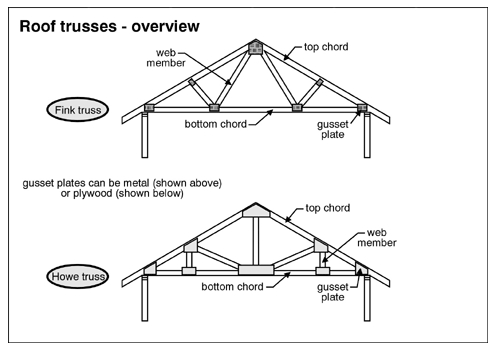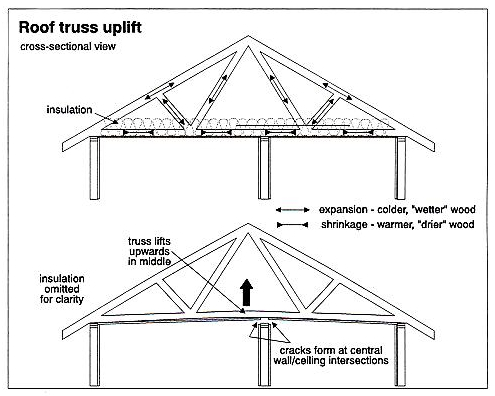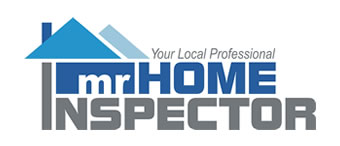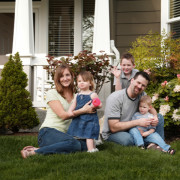An Uplifting Experience with Truss Uplifts (Provided By Carson Dunlop)
Truss uplift has nothing to do with plastic surgery or under- garments. It is a phenomenon common in homes built with roof trusses as opposed to rafters. If a house suffers from truss uplift, the top floor ceilings literally lift off the interior walls in the winter. They drop back down in the summer. Needless to say, this is a tad disconcerting to the homeowner. At first glance, one might assume that the floors have settled. Actually the ceiling has gone up – sometimes creating a gap of as much as two inches where interior walls meet the ceilings.
What is a Truss? Trusses are prefabricated structural assemblies which hold up the roof and the top floor ceilings. Trusses tend to be a stronger lighter and less expensive approach to roof framing.
Trusses are strong because they make use of the most efficient geometric shape we know of – the triangle. Trusses are a series of triangles fastened together with gusset plates. The outside members of a truss are called chords while the inner pieces are known as webs.

Why Truss Uplift?
Houses have changed over the years. Attics of newer houses have lots of insulation and ventilation. They also have roof trusses instead of rafters and ceiling joists.
The bottom chord of a truss is buried below a deep blanket of insulation. Even on the coldest days the bottom chord is nice and warm. The top chords however, are above the insulation and get very cold in a well ventilated attic.
While the bottom chord is warm and is drying out, the top chords are doing just the opposite. The cold winter air has very high relative humidity. The top chords absorb moisture from the air causing them to elongate.
With the top chords growing and the bottom chord shrinking, the truss arches up in the middle causing the ceilings to lift off the walls. In the summer, the cycle reverses itself.

What Is The Problem?
No problem really – from a structural point of view. But cosmetically it’s another story. No one has yet solved the problem, but some builders mask it by securing the ceiling drywall to the top of the walls and not to the trusses for a distance of 18 inches away from the walls. The drywall flexes and stays fastened to the walls while the trusses lift above it.
Others use a decorative molding where the walls meet the ceilings. They fasten the moldings to the ceilings but not to the walls. As the ceilings move up, the moldings go with them hiding the gap.
One little tip to remember. If you’re redecorating, always do it in the winter when the ceiling is at its highest point. Otherwise you’ll have a stripe around the room below the molding next winter!














